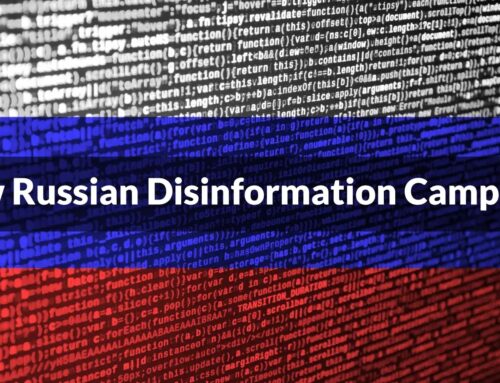
Threat Actors Exploiting SonicWall Firewalls to Deploy Akira Ransomware Using Malicious Logins
In a deeply concerning development, organizations relying on SonicWall firewalls are finding themselves on the front lines of a new and aggressive wave of cyberattacks. Threat actors are actively exploiting these critical network perimeters to deploy the notorious Akira ransomware, a campaign that has intensified since late July 2023 and shows no signs of abatement.
Security researchers at Arctic Wolf Labs first raised the alarm, observing a significant surge in these intrusions. The attackers’ methods are sophisticated, leveraging malicious SSL VPN logins to bypass established security protocols, including multi-factor authentication (MFA). This allows for rapid lateral movement and the swift deployment of Akira ransomware, underscoring a critical threat to network integrity and data availability.
Understanding the Akira Ransomware Threat
Akira ransomware is not new to the cybersecurity landscape, but its recent deployment through compromised SonicWall firewalls marks an escalation in its attack vector. This ransomware variant is known for its effectiveness in encrypting critical systems and data, typically followed by a demand for substantial cryptocurrency payments for decryption keys. Organizations targeted by Akira often face significant operational disruption, data loss, and potential reputational damage.
Initial Access and MFA Bypass: The Critical Exploitation Point
The core of this attack chain lies in the exploitation of SonicWall firewall vulnerabilities to gain initial access. Threat actors are employing sophisticated techniques to perform malicious SSL VPN logins. Critically, they are also successfully bypassing multi-factor authentication (MFA), a cornerstone of modern security defenses. While the specific CVEs or exploit details for the MFA bypass are not explicitly detailed in the source, this capability suggests either a novel exploit, misconfiguration, or an existing, unpatched vulnerability. It highlights the paramount importance of robust MFA implementations and continuous monitoring for suspicious login activities.
Rapid Progression: From Access to Ransomware Deployment
Once initial access is achieved, the threat actors demonstrate a high degree of proficiency in rapidly navigating the compromised network. This quick establishment of a foothold and subsequent deployment of Akira ransomware minimizes the window for detection and response. Such rapid progression indicates pre-planned attack methodologies and potentially advanced persistent threat (APT) group involvement, or at least highly organized criminal enterprises.
Impact on SonicWall Users
SonicWall firewalls are widely used across various sectors, from small businesses to large enterprises, governmental entities, and educational institutions. This widespread adoption means that a significant number of organizations could be at risk. The exploitation of network perimeter devices like firewalls is particularly dangerous as it provides attackers with a direct gateway into the internal network, often bypassing multiple layers of defense.
Remediation Actions and Proactive Defense
Given the severity of these attacks, immediate and comprehensive remediation actions are crucial for organizations utilizing SonicWall firewalls. Proactive measures are equally important to bolster defenses against future exploitation.
- Patch Management: Ensure all SonicWall appliances are running the absolute latest firmware and security patches. Regularly check for advisories from SonicWall. While no specific CVE was linked to this initial access vector in the source, remaining fully patched against all known vulnerabilities (e.g., related to CISA’s Known Exploited Vulnerabilities Catalog) is a foundational defense.
- Stronger MFA Implementation: Review and strengthen your MFA policies. Consider hardware-based MFA tokens or FIDO2 keys if not already in use. Implement adaptive MFA that triggers additional authentication challenges for unusual login attempts (e.g., from new locations or devices).
- Monitor SSL VPN Logs: Conduct rigorous and continuous monitoring of SSL VPN login attempts, especially for anomalous activities such as logins from unusual geographical locations, numerous failed login attempts, or logins during off-hours. Implement security information and event management (SIEM) rules to alert on such patterns.
- Network Segmentation: Implement robust network segmentation to limit the lateral movement of attackers, even if they breach the perimeter. This can contain an intrusion and minimize the blast radius of a ransomware attack.
- Endpoint Detection and Response (EDR): Deploy and maintain EDR solutions across all endpoints. EDR can detect and respond to suspicious activities post-initial access, helping to identify and contain ransomware before encryption occurs.
- Incident Response Plan: Develop, test, and regularly update a comprehensive incident response plan specifically for ransomware attacks. This plan should include communication strategies, data recovery procedures, and forensic analysis steps.
- Data Backups: Maintain isolated, air-gapped, and immutable backups of all critical data. Regularly test the recovery process to ensure data integrity and accessibility in case of an attack.
- User Awareness Training: Educate users about the risks of phishing and social engineering, which can sometimes be precursors to credential theft that bypasses even robust MFA.
Security Tools for Detection and Mitigation
Utilizing appropriate security tools is paramount for detecting and mitigating threats like the Akira ransomware attacks targeting SonicWall firewalls.
| Tool Name | Purpose | Link |
|---|---|---|
| SonicWall Global Management System (GMS) | Centralized management, monitoring, and reporting for SonicWall firewalls. Essential for log aggregation. | https://www.sonicwall.com/products/management/gms/ |
| SIEM Solutions (e.g., Splunk, Elastic SIEM) | Log aggregation, correlation, and real-time alerting for suspicious login attempts and network anomalies. | https://www.splunk.com/ https://www.elastic.co/siem |
| Endpoint Detection and Response (EDR) Platforms | Behavioral analysis, threat hunting, and automated response capabilities on endpoints to detect ransomware activity. | (Various vendors, e.g., CrowdStrike Falcon, SentinelOne, Microsoft Defender for Endpoint) |
| Vulnerability Scanners (e.g., Nessus, OpenVAS) | Regularly scan internal and external networks for known vulnerabilities on network devices and endpoints. | https://www.tenable.com/products/nessus https://www.openvas.org/ |
Conclusion
The sustained campaign deploying Akira ransomware via compromised SonicWall firewalls represents a significant and ongoing threat to organizations worldwide. The attackers’ ability to bypass MFA and rapidly encrypt systems highlights the need for robust, multi-layered security strategies. Defenders must prioritize immediate patching, stringent MFA enforcement, continuous log monitoring, strong network segmentation, and tested incident response plans to mitigate these sophisticated attacks. Staying vigilant and proactive in cybersecurity defenses is not merely good practice; it is essential for survival in the current threat landscape.





